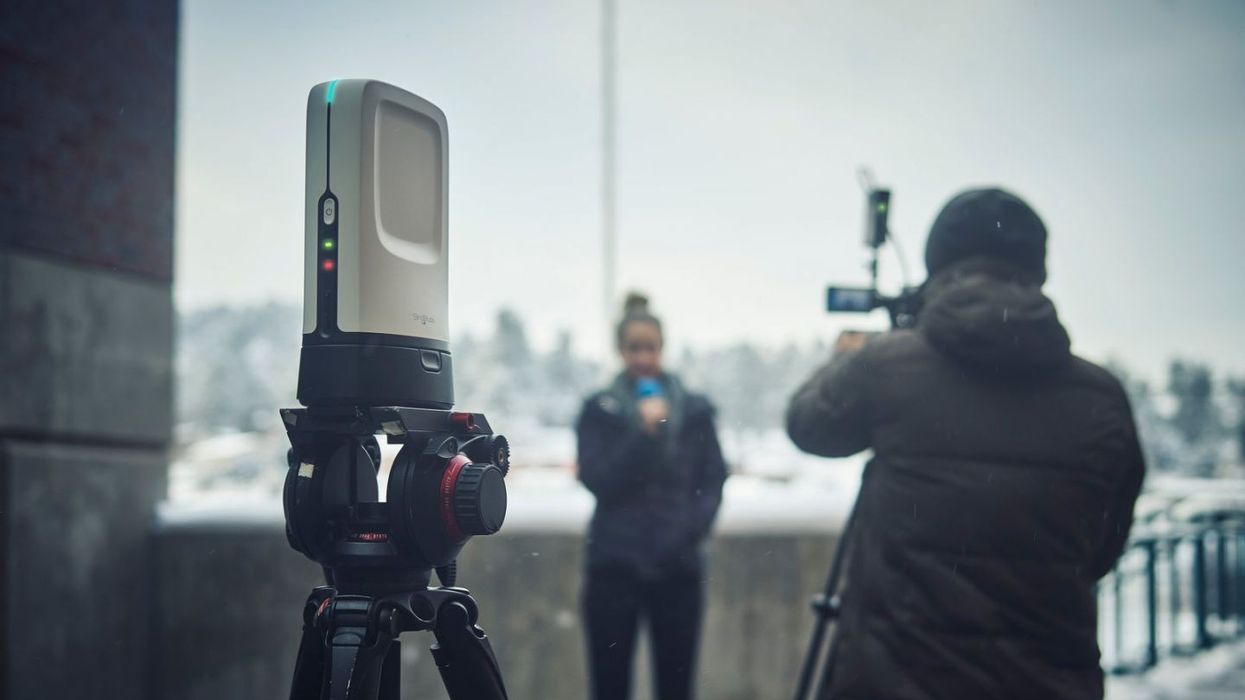Sling Studio Sets your Multi-Cam Free
Sling Studio creates a wireless multi camera solution that works on your iPad.

Shooting multi camera productions has long been a great way to keep cash flowing in the film industry. Whether it's shooting a local band, sporting event, or church service, clients frequently want their events covered and it can be a fun way to keep growing your skills and paying for new gear. The biggest hurdle, however, has been the extensive cabling required for a live multi camera set-up, and the work required to edit it properly in post. Now, Sling Media, makers of the Slingbox for watching your cable channels on a tablet, is out with the new wireless multi camera solution that works on your iPad.

An indie-friendly solution
Sling Studio solves the cabling problem by working wirelessly, streaming 1080p30 or 60p video over wifi back to the base hub, which can then be controlled and wirelessly by an iPad. That iPad app allows you to not only monitor up to 10 feeds, but you can also edit, recording to SD card in the base station or an attached hard drive. The flexibility is tremendous, with both a cut sequence and separate isolated video tracks being recordable to the external hard drive. A plugin brings the synced video into Premiere, yet another instance where the flexible plugin architecture of Premiere puts it ahead of Avid.
There are already a lot of solutions out there for wirelessly dealing with the cabling situation, such as the market leader Teradek and the new player Freecast, but Sling Studio aims to be a solution at indie friendly prices, with a full setup for 3 cameras coming in around $2000.

Wireless video monitoring
Since the combination of a base station and a single camera comes in at only $1450, this is also a potential solution for wireless video monitoring on single camera shoots. The transmitter on camera has a battery that only lasts an event-friendly three hours. This won't get you through a typical shoot day, however, so you'll need some way to charge at the camera via usb like a D-tap to USB cable or a USB battery pack.
The base station is also too large to strap to the back of a director's monitor, though it does have a 1/4-20 mount for easy tripod mounting. If you set up the base station at the DIT cart, and the director has an iPad, you have a potential solution for a director to keep a close eye on shots wirelessly, saving the constant repatching of HDMI or SDI cables, and the director can wander away from the base station willy nilly with their iPad and keep an eye on the shot without being tied down.

Video signal
In our tests, the video signal remained strong to 200 feet quite easily (the size of our test room), but signal was lost when walking around corners or through hallways. Since this is a WiFi based system, this makes sense, and the stated 300 foot range will make this an ideal tool for recording live concerts, working on a wide open set, or outdoor work. However, if you are looking for a wireless video tool to work in a dense office environment, with an edit room several rooms away from the stage, this isn't likely isn't the solution for you.
One frustration with the current Sling Studio is that it is iOs only, which not only rules out Android, it also leaves out Mac OS. Since every set still has a few laptops on it, it would be great if you could log into the base station for monitor and control via a Macbook Pro. Hopefully that feature will roll out soon. In the meantime, control is only capable via iPad (you can connect an iOs phone as a camera, but it can't control the base station), and with the least expensive iPad it works with being the iPad Mini 4 at $399. That still makes for an entire solution at under $2500, which is very reasonable for what's on offer. Hopefully, support for PC and Mac laptops will roll out in the future.

The CameraLink units are compact and mount easily, even coming with their own mounting adapter for easy use on a DSLR. However, they use the relatively rare Micro-HDMI connector, though they do include adapters for the more common Mini-HDMI connector that you might find on a GH5. If you are planning on using the CameraLink with something like the XT-2, with its own micro adapter, you'll need an additional cable like this one from Atomos , and you'll need a Micro to Full adapter to use with something with a full sized HDMI, which shows up on some larger cameras.
Available now from B&H with the base station at $999 and camera modules for $349.
Tech Specs:
- Switch, record and broadcast HD video for up to 4 video sources simultaneously
- Connect wirelessly to smartphones and SlingStudio CameraLink units
- Broadcast to YouTube and Facebook Live, other streaming platforms coming
- Record a live-to-tape program as well as all individual source inputs for post-production
- Employ live camera or mixer audio by connecting to the onboard 3.5mm line input
- Attach external storage and LAN via SlingStudio USB-C Expander
- Control your multi-camera production wirelessly via the intuitive iPad app (requires Air 2, Pro or Mini 4)
- CameraLink uses Micro-HDMI connectors, includes Micro to Mini cable adapter in box













